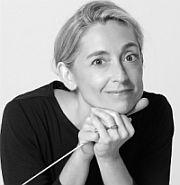“Flowing Shadows” directly referred to one particular piece: Lou Harrison’s composition The Only Jealousy of Emer (1949), which was performed alongside shadow puppets. The composer’s piece is based on a play by William Butler Yeats, which itself derives from a Celtic myth. In the tale, Emer, a virtuous wife, is told she can bring her dead husband back to life, but only by renouncing her love for him. Harrison’s music was inspired by these themes of painful renunciation, acceptance, and subsequent transformation. His piece, written for flute, cello, bass, tack piano, and celesta, is divided into seven sections, with titles that point to specific events in the drama. Most of the sections feature poignant melodies in the flute and strings, over ostinato patterns in the keyboards.

Although Harrison’s piece originally called for live dancers, this performance replaced them with shadow puppets. While the puppetry was not intended to depict any literal narrative, it nonetheless drew on distinct and familiar images. They included a female figure (presumably representing Emer herself), as well as flowers and butterflies, peacock feathers, and a man sinking on a fishhook. The mood evoked by the puppetry corresponded both to the music and to the dramatic events. Indeed — and to the credit of the puppeteers, as well as the musicians, led by Paiement — the degree of coordination between music and movement was perhaps the most remarkable aspect of this performance.
Whereas Harrison’s piece requires collaboration between artistic disciplines during its performance (or realization), other pieces on the program were initially inspired by a similar convergence. For example, Nourlangie (1989) is a work for solo guitar and instrumental ensemble, by Peter Sculthorpe, an Australian composer. Its name refers to a rock formation on his continent that is adorned with aboriginal art. The composer intended his piece to reflect his own reactions to Nourlangie. Although Sculthorpe has not specified the precise nature of these reactions, they seemingly relate to soaring, expansive melodies on the one hand, versus something far darker and more sinister on the other. Since the piece features a guitar solo, which was performed by the accomplished David Tanenbaum, I was surprised by the subdued, even subordinate, role the guitar often assumes in Nourlangie. The piece’s melodic parts, in particular, foreground the strings instead of the guitar.
How Dense the Flute?
Framing the program were two seminal pieces by Edgard Varèse, a French-American composer noted for his exploration and expansion of musical timbres and textures. Although his innovations often involve electronics, as well as rhythmically complex percussion music, the piece that opened the concert was Density 21.5 (1936), a modern classic for unaccompanied flute. The title labels the density of platinum, because Varèse wrote the work for the flutist Georges Barrère to perform on his new (and then novel) platinum flute. The solid soloist on Saturday was Antares Alaeddin Sagbas, a graduate student at the Conservatory.Since Varèse originally conceived of Déserts (1954) as a musical score for a film that never materialized, this final piece again reflected the theme of artistic convergence. The film was to have depicted physical, deserted spaces. Moreover, Déserts was intended to conjure psychological wastelands, especially memories of the destruction wreaked by 20th-century warfare. In the work, which is scored for 20 instrumentalists and two-track tape, sections for the instrumentalists are separated by three taped interludes. The taped and instrumental parts can be performed independently of one another, though this performance featured Déserts in its entirety. Hearing the complete piece made it easier to appreciate the extent to which sounds from the instrumental parts reverberate in the electronic ones, and vice versa.
As I listened to both the well-known staples and the lesser-known works on this program, I sometimes found myself forgetting that Paiement’s New Music Ensemble comprises students, rather than professionals. Even this program accentuating convergence between arts, in other words, nonetheless highlighted good music; even this concert set on a shadows theme masterfully brought its music to light.

